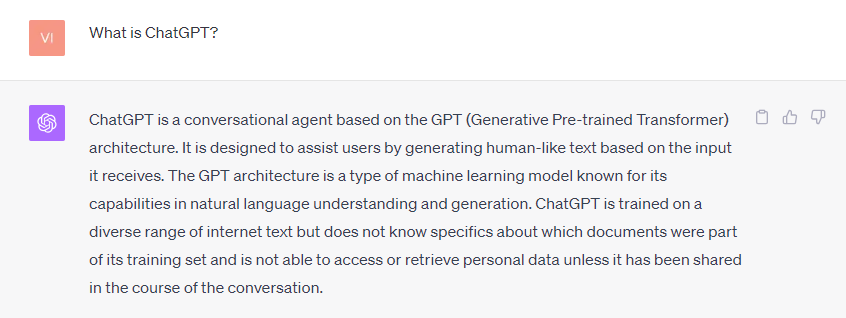Outbase will be closing down from 31st October 2024. Thanks for your support along the way, if you have any questions please contact us before then on the chat below


Want to terminate the competition? It’s time to embrace artificial intelligence. There’s some surprisingly simple ways you can start using machine learning to improve your processes and grow your business.
“The future has not been written. There is no fate but what we make for ourselves.” John Connor
When we talk about artificial intelligence (AI), it’s easy to think of teams of boffins at IBM, Google (and Skynet) using fancy technology to infiltrate every aspect of our lives. The reality is a lot more pedestrian.
Using algorithms and automated processes that require less human input is a great way to improve profits and stay competitive. That’s why businesses of all sizes are looking to adopt AI to help them in their everyday operations. Here’s how you can too.
In its simplest form, artificial AI refers to the imitation of human intelligence in machines, where they’re programmed to think like humans and mimic their actions.
It’s not all Skynet and cyborgs. Have you ever played a game like chess against a computer? Or used a camera phone that recognizes faces? That’s AI at work, and it can be used to carry out all kinds of tasks. From writing a blog, to making cars drive themselves, AI is hugely powerful, and is becoming more and more integrated into our everyday lives.
AI isn’t just for the tech giants in Silicone Valley. There are so many ways that startups and small businesses can use AI to make the day to day runnings much easier and more efficient.
The key is to start small and experiment with different AI-powered tools and systems to see what works best for your business. You can bet most of your competitors are already doing it.
Here’s the way startups and small businesses are already using AI to grow their business and get more customers.
You’ve seen it all over your LinkedIn, everyone is talking about it. But first off, what on earth is ChatGPT? Let’s ask the devil itself 👇…

And it’s evolving. OpenAI is currently rolling out GPT-4 which has more creative capabilities and the ability to handle more nuanced instructions than GPT-3.
Of course, there’s some controversy with using ChatGPT to create content. And for some of us (like me – a content writer!), it’s been a worry our jobs could be replaced with AI tools like these.
Take a look at Midjourney for example, an AI program that creates images from written prompts. It’s already being used for illustrations for comic books and graphic novels – potentially taking work away from an Illustrator. But in a lot of ways, these programs aren’t in a position to replace humans yet.
Though, as they continue to evolve, should the creatives of this world be worried? Arguably, no. AI platforms like this, while intelligent, will always lack the nuance of human thought and ease of which we can distinguish social norms to create content that connects with our peers.
You need to think of GPT as a helping hand, there to make your job easier, not to do your job.
“The unknown future rolls toward us. I face it, for the first time, with a sense of hope.” Sarah Connor
There’s lots of tedious parts of creating content that you can use ChatGPT to help with. For example, writing email templates. While you want your content to be fresh, original and targeted at your specific audience, you can use GPT to assist with the finer details.
ChatGPT can be used to create a model and then you edit it to make it more personal and feel more human. E.g.
👉 “Revolutionize your start up: Outbase can help you get there”.
It’s also a great tool for creating social media content. It can help create, succinct messaging for LinkedIn, Twitter, Instagram, Facebook… the list goes on.
Another recent feature that ChatGPT introduced is that it can be integrated directly into LinkedIn, acting as a writing assistant for people who want to improve their profile and for recruiters writing job descriptions.
Small businesses can use AI-powered personalization tools to deliver personalized marketing messages to their customers. These tools can analyze customer data to understand their preferences and deliver targeted messaging that resonates with them.
And one step further than this, AI can offer dynamic databases to make finding new customers easier than ever before. Outbase offers 230 million B2B contacts, easy to access and easy to filter to hone down to your specific audience. But how does it work? Find out more 👇.
Small businesses can use AI-powered chatbots to provide instant customer service and support. Chatbots can answer common questions, provide information about products and services, and even process orders. It’s an efficient way to give great customer service without wasting any resources.
Intercom is a platform where you can create your own chatbots for your website. Long-gone are the days when you logged onto a chatbox on a site, and there was an actual person talking to you. And sure, sometimes the AI answers can be frustrating and unhelpful but as chatbots like these develop, that’s changing. Chatbots are becoming more intelligent, with specified customer journeys.
Another major perk of bots like these is that your customer support can be available 24 hours a day without a huge pay out.
Google is taking on OpenAI as it introduces a new API (Application Programming Interface) for PaLM (Pathways Language Model), its advanced language model. This API will allow businesses and developers to build custom chatbots and more.
AI-powered predictive analytics helps you to analyze customer data and predict buying patterns. This means you can tailor your marketing and sales efforts to better meet specific customer needs and increase sales.
Think of it like this: (not a terminator reference, sorry guys) you’re a barista and a regular comes in everyday at 8:30am and orders an oat latte. After a few weeks, you might start saying “the regular?” instead of asking them what they want, and after a few months, you might even start making the oat latte ready for their arrival. AI can help you do this on the large scale meaning you’ll always be ready to meet customer expectations.
AI being used to spot fraud isn’t a new invention. Just think of “Spam”, how often do you get emails being sent to the Spam folder? All the time probably. And no, there’s not someone crawling through all your emails to make sure they’re genuine – it’s all done by computers.
AI-powered fraud detection systems are used to identify and prevent fraudulent transactions from spam emails to stealing someone’s indentity. How do they work? These systems analyze customer data and detect patterns to find fraudulent activity.
Artificial intelligence is already an everyday part of life, and it’ll only become more integrated in how we do business as it evolves. But there’s no need to fear it! AI and automation has been invented to make your life easier. If used correctly, it can elevate your business and give you back hours of wasted time on manual or admin tasks.
So what’s the take away, much like the T-101, AI can’t be bargained with, it can’t be reasoned with, and it absolutely will not stop… until you embrace it.